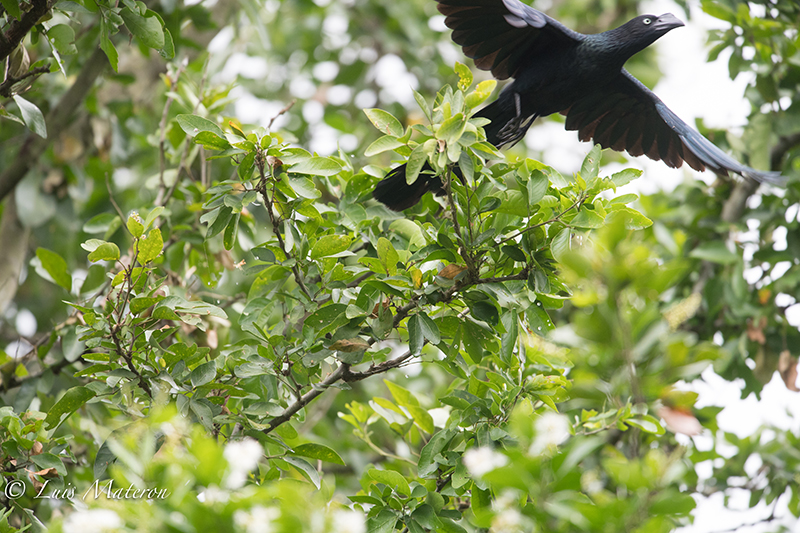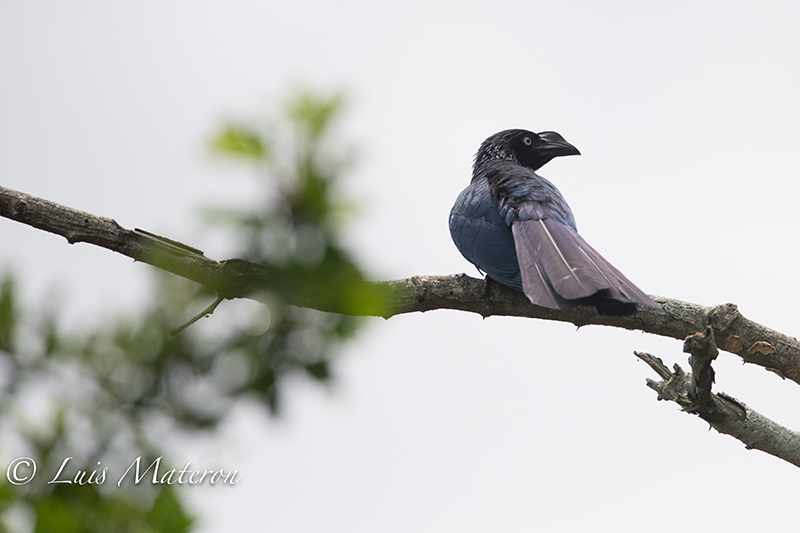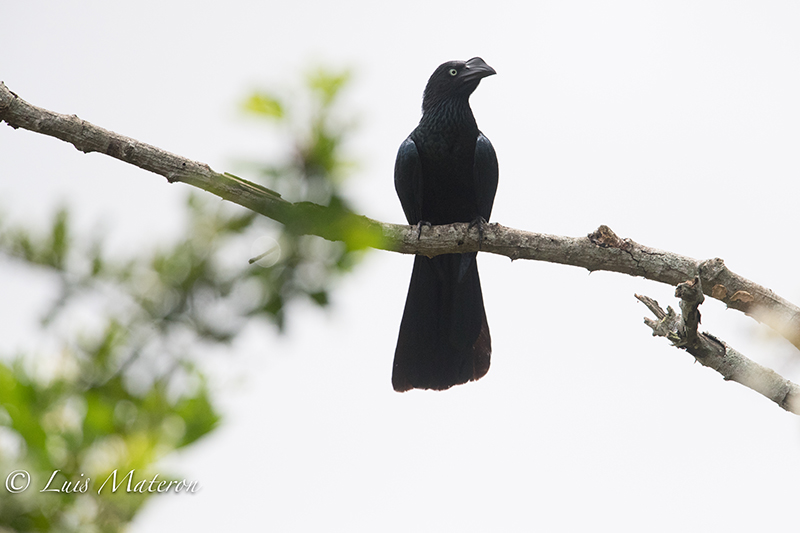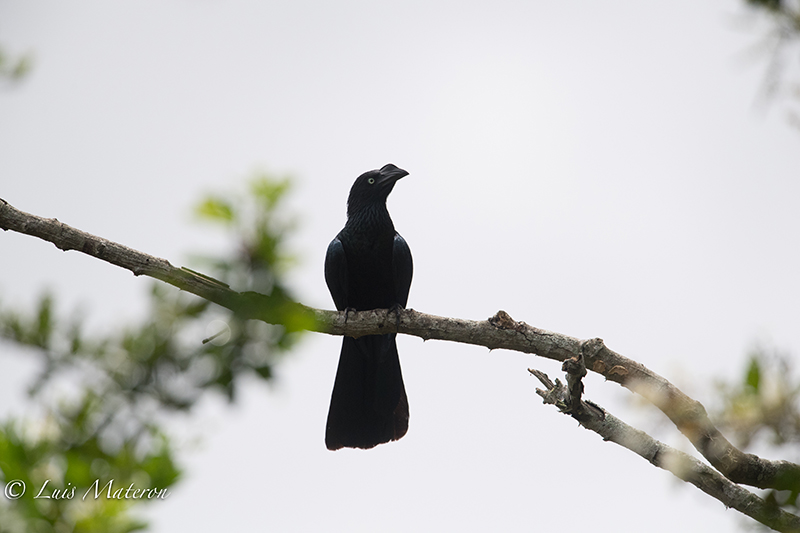
GREATER ANI
GARRAPATERO MAYOR
Crotophaga major
This is a very gregarious species, always found in noisy groups. Crotophaga from the Greek root kroton meaning tick and phaga that eats. It is found in mangroves, swamps, semi-open woodland near water, and the edges of forests. It is very distinctive due to its staring white eye and glossy blue, green, and purple sheen on the wings and tail. The adult has a blue-glossed black plumage. It is a bizarre bird with a long floppy tail and a peculiar, massive ridged and broad-sided beak. Immature birds have a dark iris. It weighs about 170 g (6.0 oz). It is often seen in family groups. It feeds on large insects and even lizards and frogs. Adults are incapable of recognizing their own eggs or nestlings, so the young are raised in communal clutches. The nest is built communally by several pairs. The nest is a deep cup lined with leaves and placed usually 2–5 m (6.6–16.4 ft) high in a tree. Nesting groups are composed of 2 to 4 pairs that build a single nest in which females lay up to 10 chalky deep blue eggs. All individuals in the group participate in territorial defense, nest-building, incubation and food delivery.
Es un ave bastante gregaria y ruidosa que se encuentra en zonas abiertas, bajas y pantanosas de casi todo el país. Su nombre Crotophaga significa que come garrapatas y deriva del griego kroton = garrapata y phagos = que come. El epíteto major viene del latín maior = mayor. Presenta ojos blancos, patas negras y pico negro comprimido lateralmente con culmen curvo en la base de la mandíbula superior. El adulto es de color negro-azul lustroso con los bordes de las plumas de las alas verde broncíneo y cola con un lustre púrpura. Los machos pesan en promedio 162 g y las hembras 145 g. Los jóvenes presentan iris oscuro. Se diferencia de otros garrapateros (Crotophaga) por sus ojos blancos, plumaje, cola, pico y tamaño. Estas aves no pueden reconocer sus propios huevos. Por esta razón, un grupo communal construye su propio nido en árboles a una altura no mayor de 5 metros. Las hembras del grupo ponen sus huevos en el mismo nido. El grupo defiende, incuba y alimenta a sus polluelos.

LAM_4296

LAM_4331

LAM_4327

LAM_4333

LAM_4335

LAM_4331
